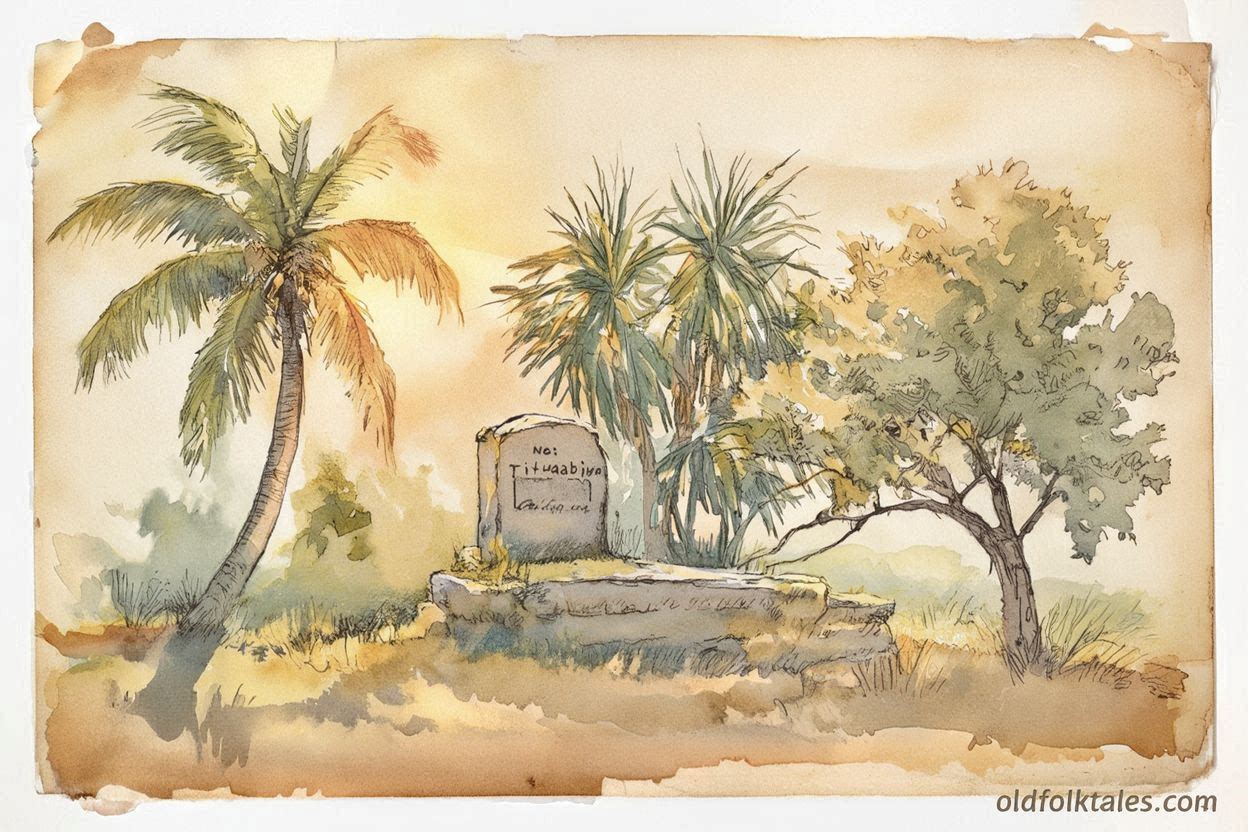In the earliest days of the islands of Kiribati, when the land was new and the people still learned the ways of the sea and sky, there lived a maiden named Nei Tituaabine. Her name meant “the red-haired woman,” for her hair shone like the glow of sunset and her skin carried the warmth of the dawn. She was kind, humble, and gentle in all her ways, and her beauty was said to calm the winds and make flowers bloom wherever she walked.
In a distant land beyond the reef, there lived a giant chief who ruled many islands. His name was Uekera, and his voice was like the sound of breaking waves. One day, word of Nei Tituaabine reached his ears, and his heart stirred with wonder. Determined to meet her, he crossed the sea and arrived at her village, bringing gifts of shells, pearls, and coral jewelry.
When the giant chief saw Nei Tituaabine, he bowed low, and the ground trembled beneath him. “I have traveled far to find you,” he said. “Your beauty shines brighter than the stars.” Nei Tituaabine welcomed him with kindness, for though he was mighty, she saw the gentleness in his spirit.
Days turned into months, and love grew between them. But though they loved each other deeply, their union was not destined to last. Nei Tituaabine, a mortal woman, began to grow ill. Her body weakened, though her spirit remained bright. The giant chief cared for her tenderly, but he could not stop her passing. When she finally closed her eyes, the island mourned with him.
The chief built her a resting place on sacred ground and placed her body there with woven mats and garlands of flowers. He sat beside her grave for many days, refusing food and water, his tears falling like rain upon the earth. Then, one night, he dreamed that Nei Tituaabine spoke to him softly. “Do not grieve, my beloved. From my body new life will grow. I will nourish the world even in death.”
When morning came, three young shoots had begun to grow from the soil above her resting place. From where her head lay, a tall coconut palm reached upward toward the sky. From her chest rose a pandanus tree with long leaves that swayed like hair in the wind. And from her feet spread an almond tree whose branches offered shade and fruit.
The giant chief knew then that her promise had been fulfilled. Her spirit had transformed into the trees, and her gifts to humankind were the food, shade, and materials they would forever use to live. The coconut provided water and nourishment, the pandanus gave leaves for weaving and fruit for eating, and the almond tree offered its nut for strength and shelter.
Generations later, the people of Kiribati still tell the story of Nei Tituaabine. Her spirit is said to dwell within the groves, watching over those who honor the land. When the wind rustles through the trees, it is her gentle voice blessing the island once more.
Moral Lesson:
The story of Nei Tituaabine teaches that life and love continue through nature. Though death may seem like an ending, it can also be a transformation that brings renewal and abundance. It reminds the people of Kiribati to honor the land, for within every tree may dwell the spirit of those who loved before them.
Knowledge Check:
1. Who was Nei Tituaabine in Kiribati legend?
She was a beautiful maiden whose spirit transformed into three sacred trees after her death.
2. What were the three trees that grew from Nei Tituaabine’s resting place?
The coconut, pandanus, and almond trees.
3. What did each tree symbolize for the people of Kiribati?
They represented nourishment, shelter, and the spirit of renewal.
4. Who loved Nei Tituaabine deeply?
A giant chief named Uekera who ruled over many islands.
5. What message did Nei Tituaabine’s dream give to the chief?
That from her body would grow new life to sustain humankind.
6. What is the moral of the story?
That love and life endure through nature, reminding people to respect and care for the earth.
Source: Adapted from Traditional Stories of Kiribati by the Kiribati Cultural Centre (2010).
Cultural Origin: Kiribati (Micronesia)









